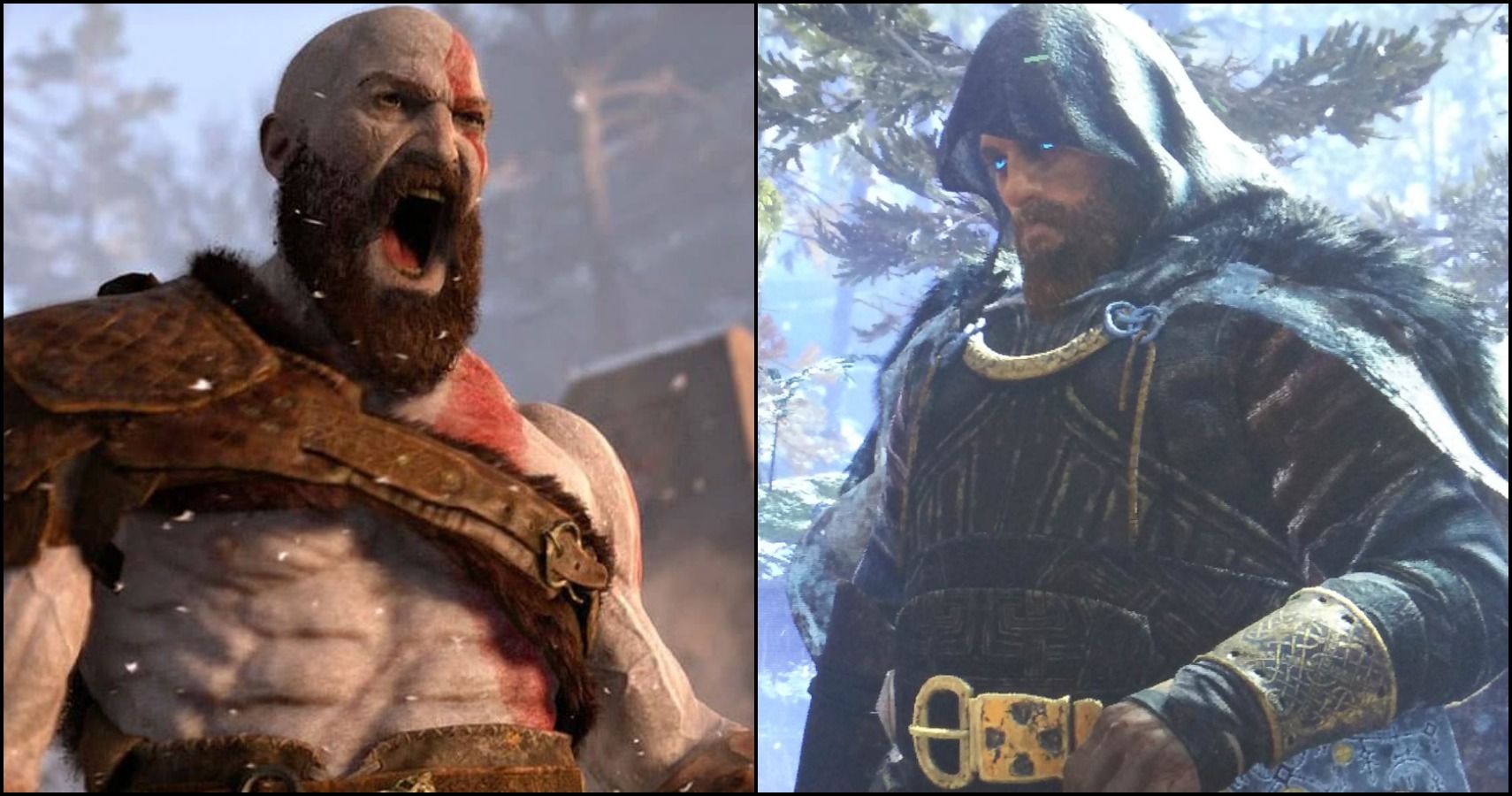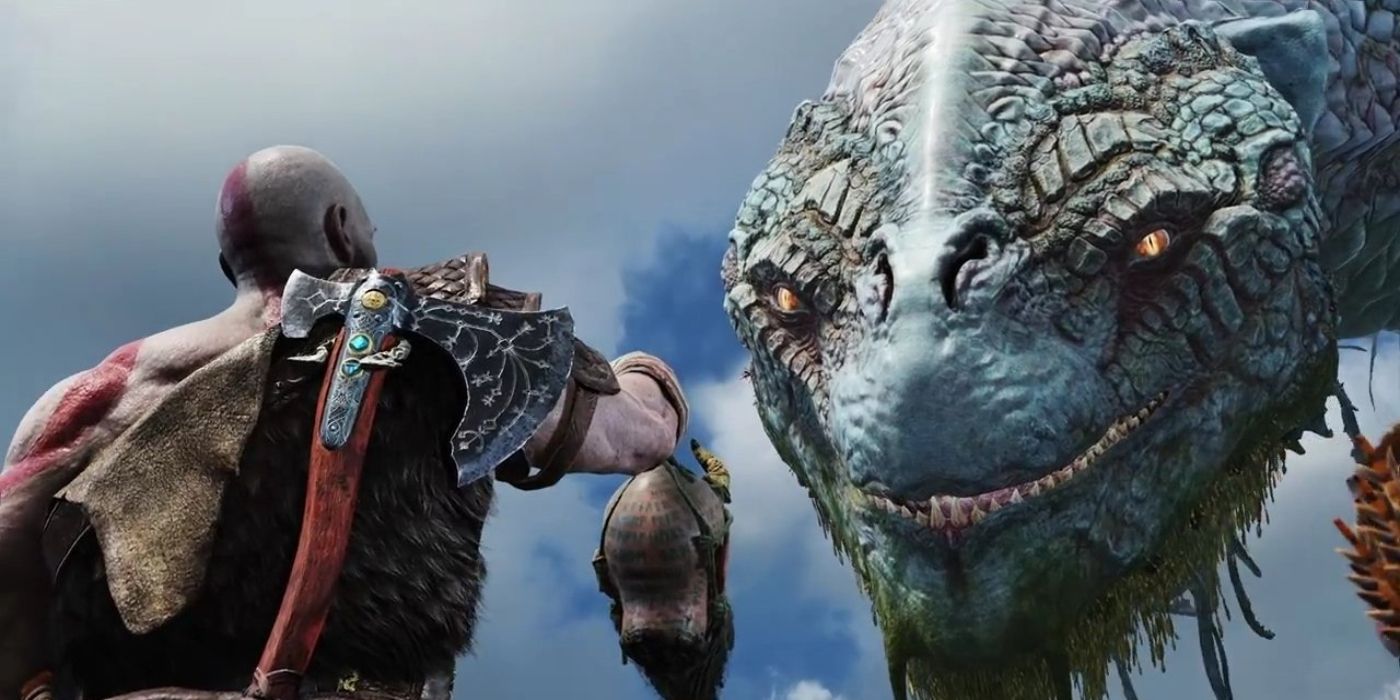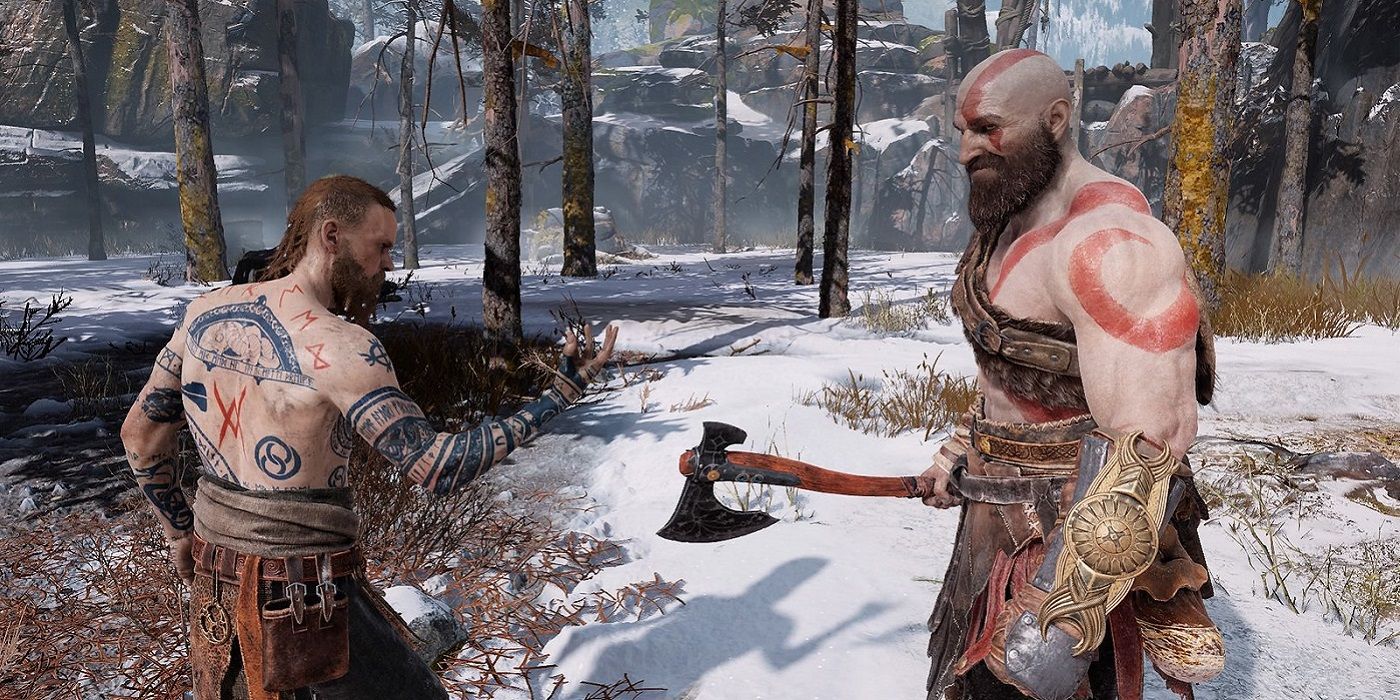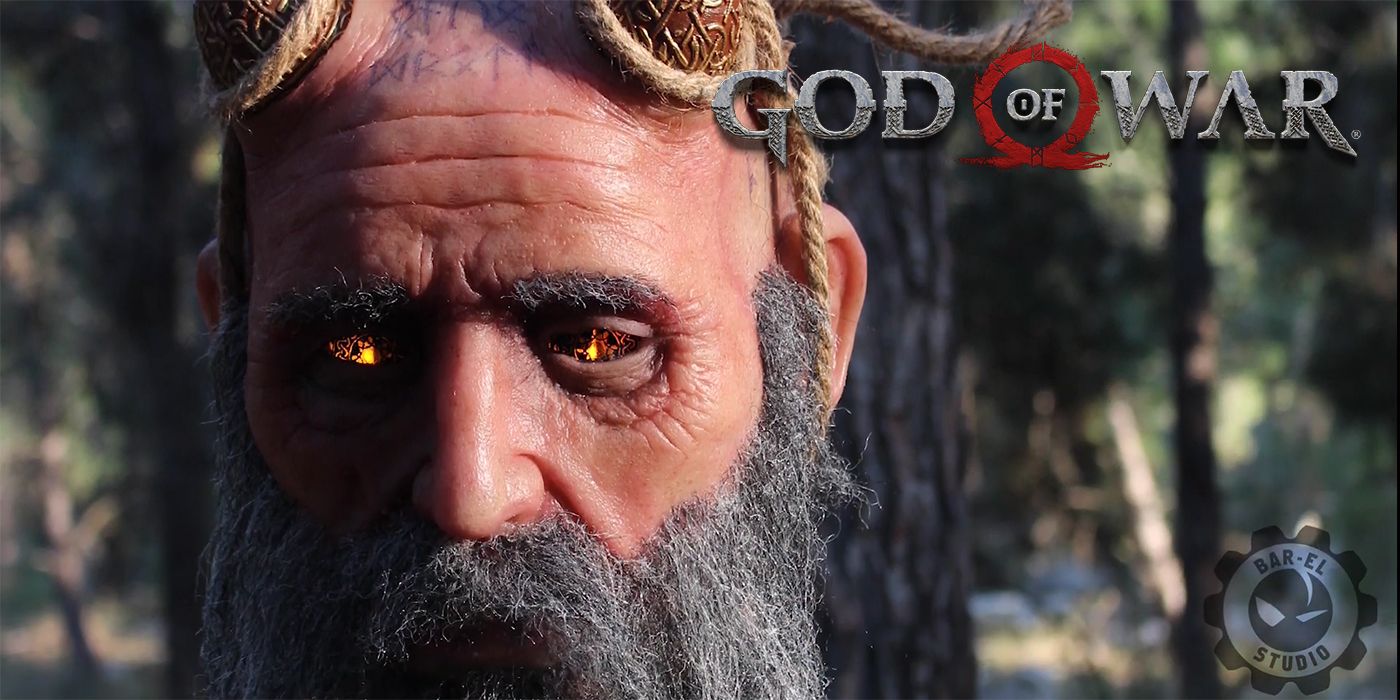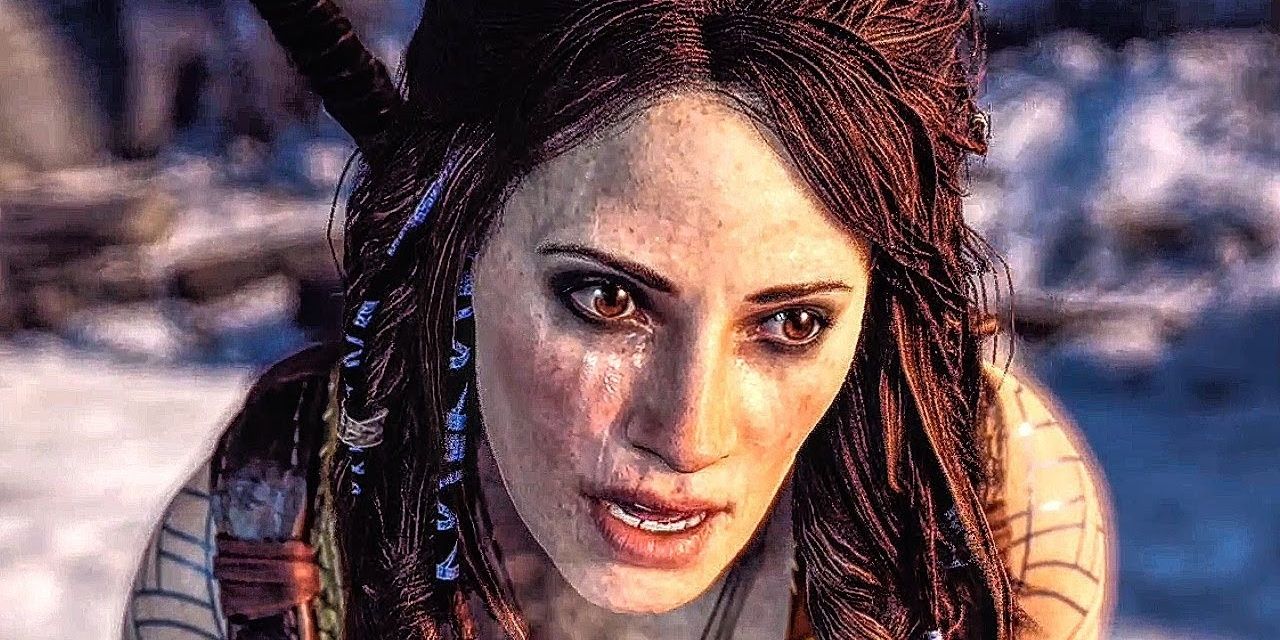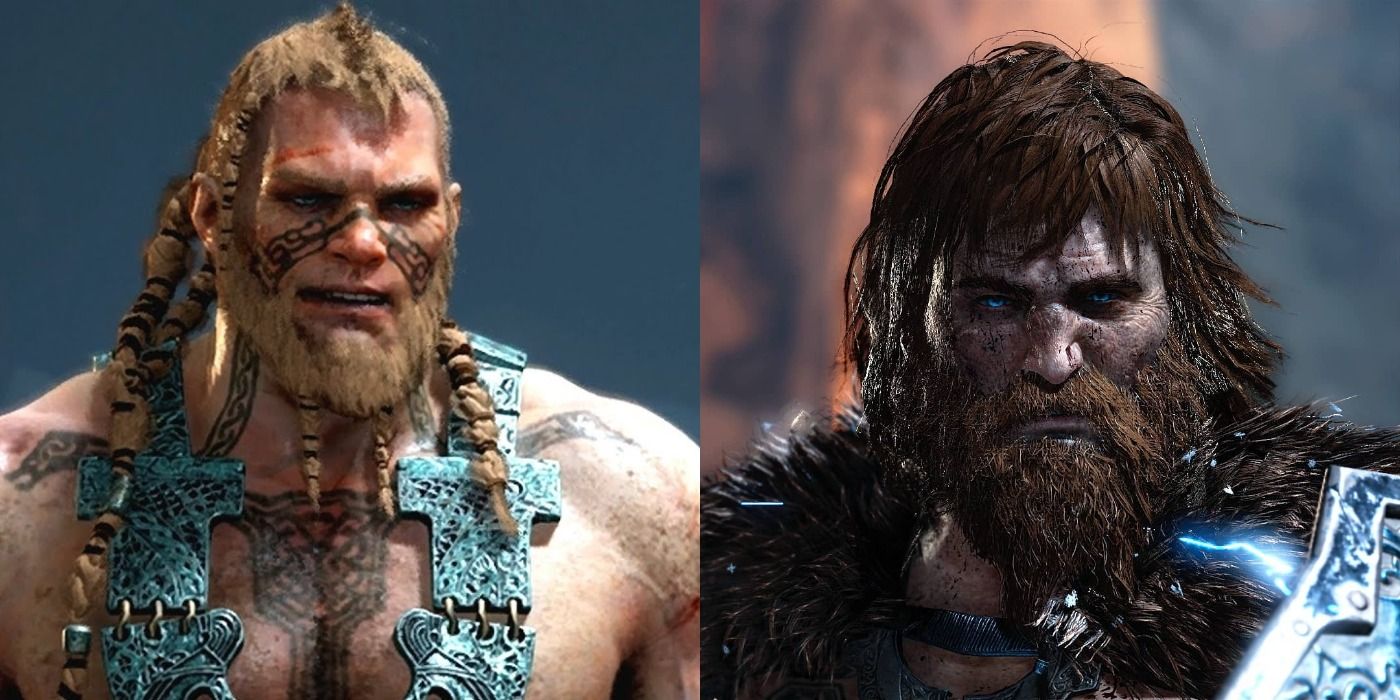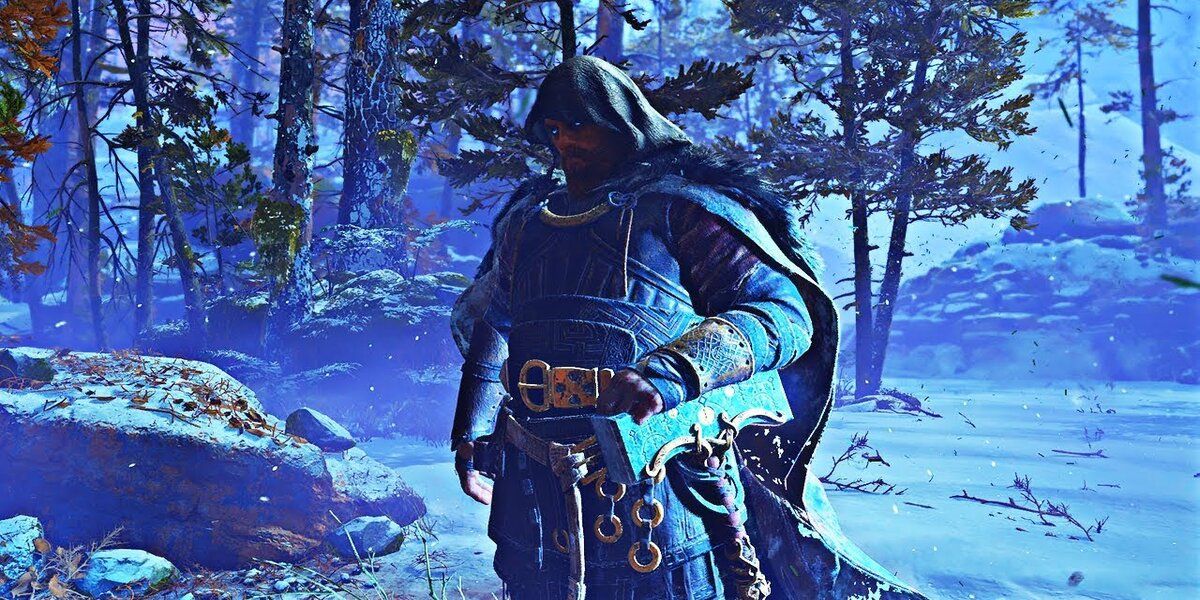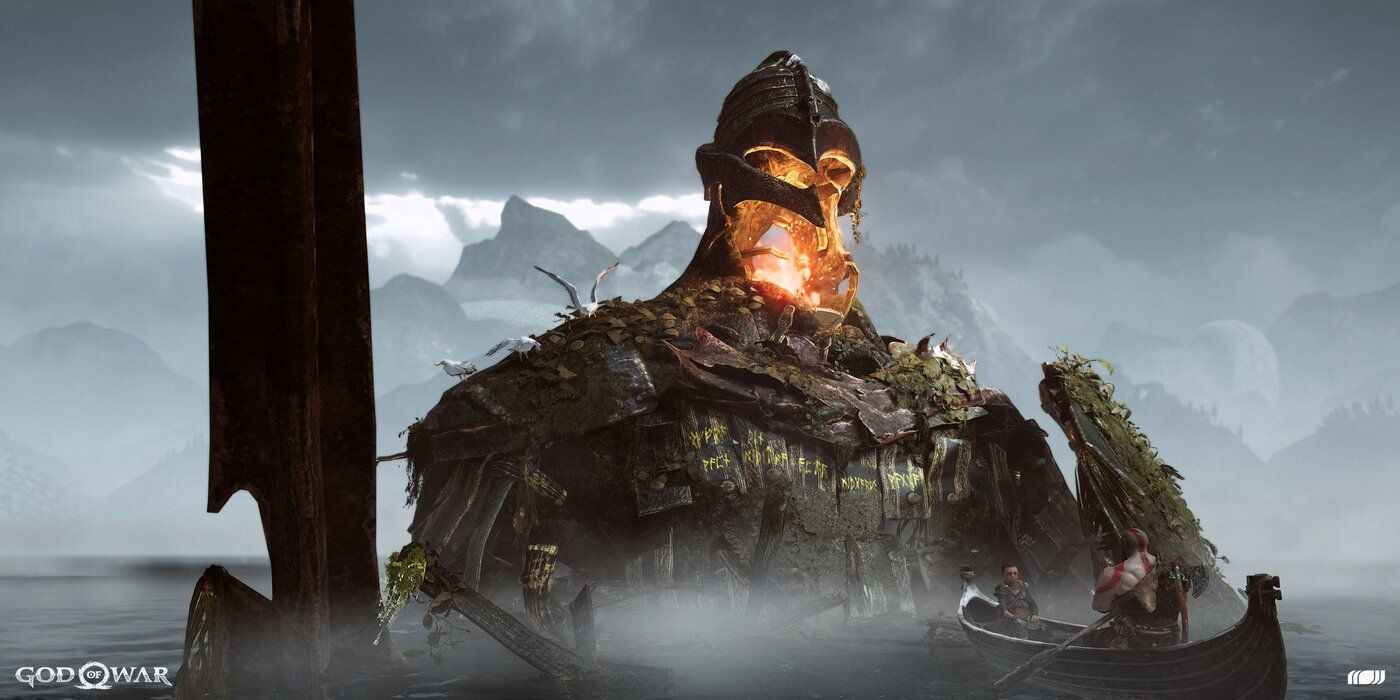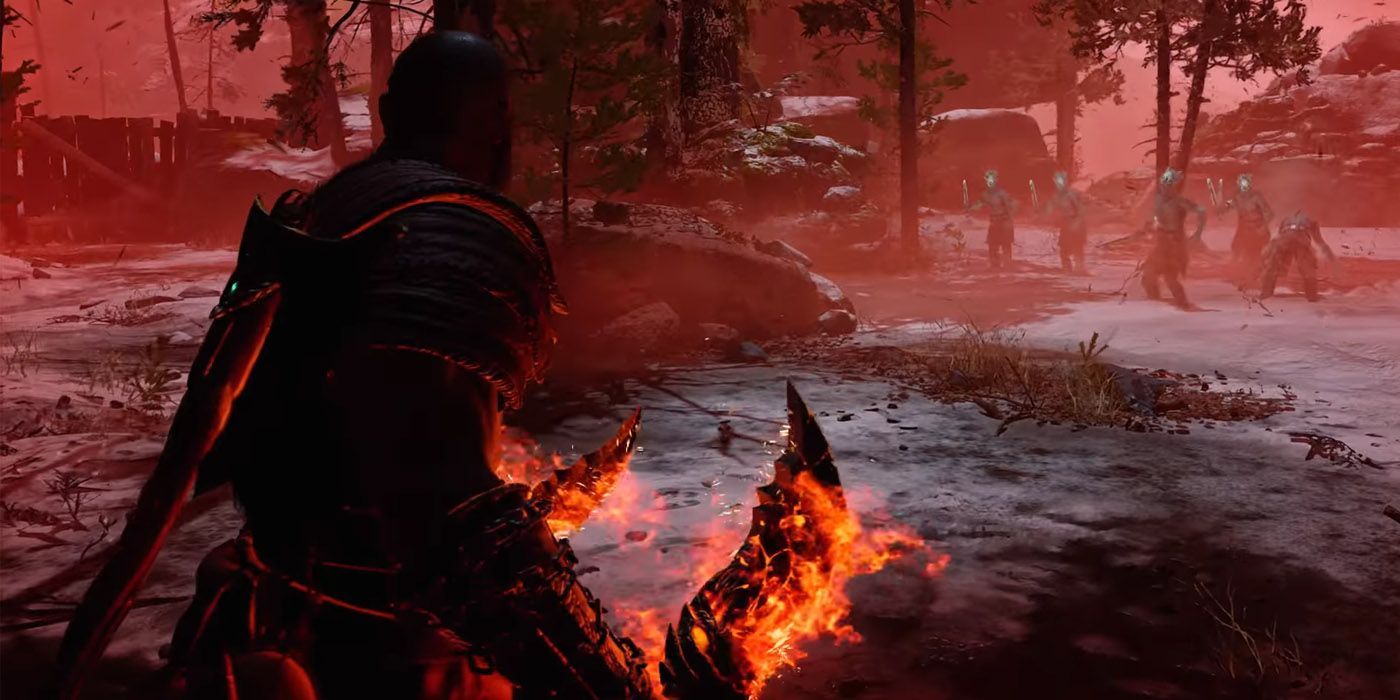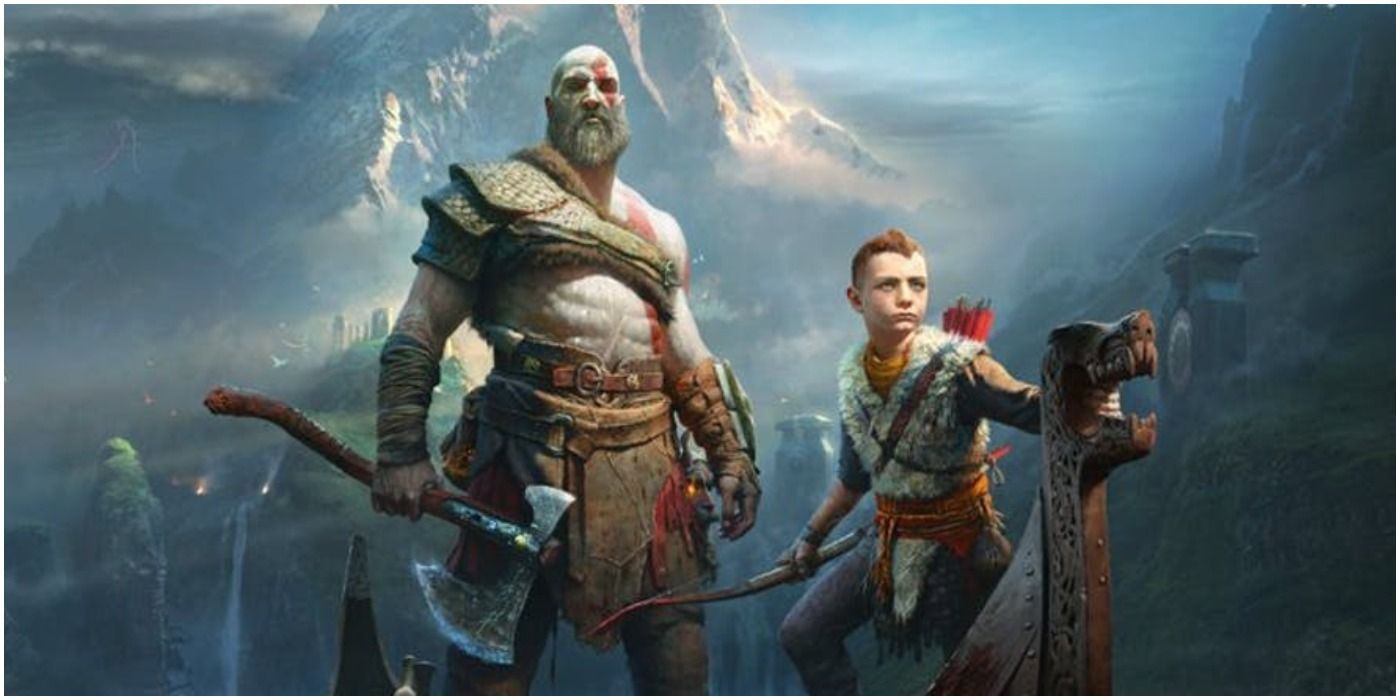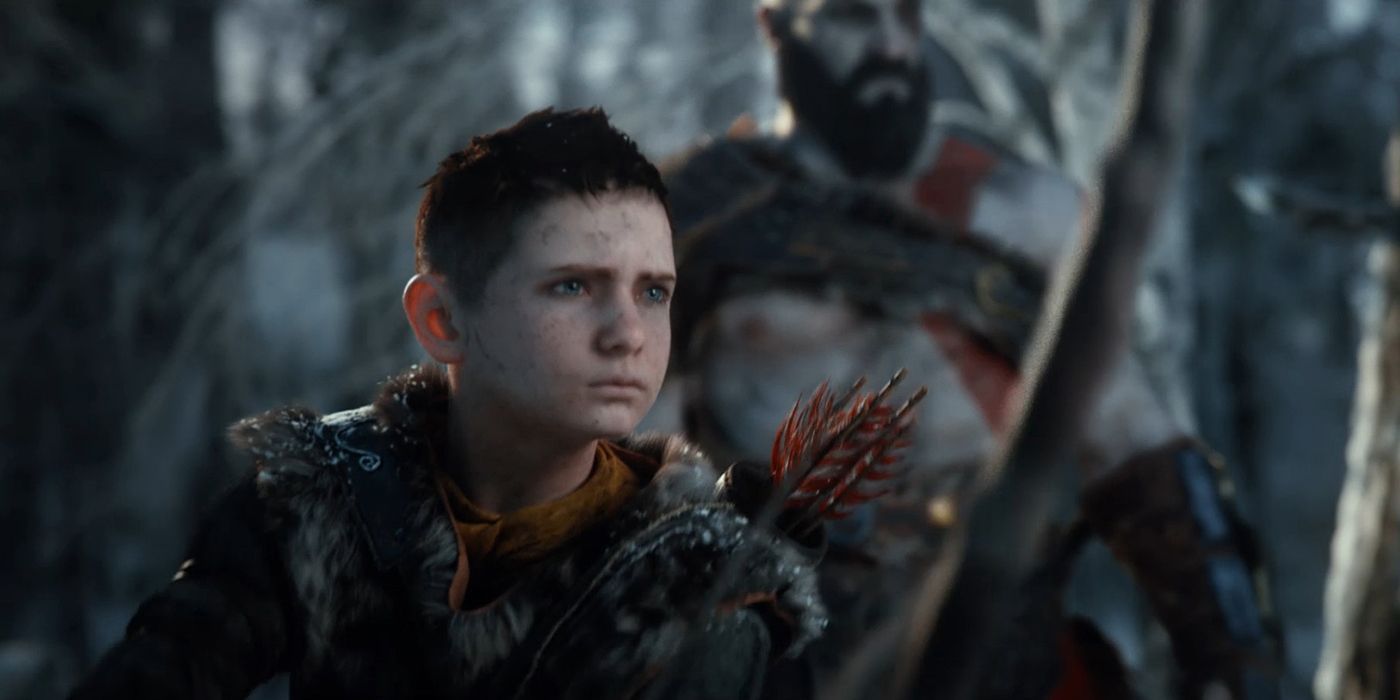When God of War came out in 2018, it took the world by storm. Everyone had been anticipating this game's arrival ever since it was officially announced at E3 in 2016. When it did, it received critical acclaim. Both the fans and critics loved it. It was a complete reimagining of the brand. It played differently and the setting was completely new.
One of the most fascinating things about the game and its story is its shift from Greek mythology to Norse mythology. After Kratos had wiped out the Greek gods, he is now roaming the world of Midgard and its neighboring realms. While the game itself isn't an exact copy of the mythology it's set in, the changes made are still quite reasonable.
10 Jormungandr
Jormungandr, or The World Serpent, is the being found lurking in the Lake of Nine. While initially seeming hostile at first, it is later revealed that the massive serpent was friendly and was more than willing to aid Kratos and Atreus on multiple occasions. In the game, it is thought that Jormungandr was a creature out of time. He was sent to the current timeline from the future due to a battle with Thor so fierce that they literally tore a hole through time.
This speculation makes sense if you consider Jormungandr's story in the mythology. In Norse mythology, Jormungandr is supposed to be a child of Loki. In this game, we later find out that Atreus is in fact Loki, but he is still a child in the game so it wouldn't make sense for him to have offsprings yet. The world serpent's presence in this game contradicts that of the story in the mythology unless he really is from the future.
9 Baldur
Baldur is the main antagonist in the game. He's a character that's ever-present in the game, consistently tracking Kratos and Atreus down, even seemingly coming back from the dead after Kratos "kills" him in battle. He is portrayed to be psychopathic, ruthless, and fearless. His "curse" has caused him to be devoid of any kind of harm and pain.
In the mythology, Baldur is nothing like how he is in the game. He was well-mannered, a bright presence, elegant, beautiful. He was also thought to be merciful, just, and kind. So, everything opposite of what he is in the game. In the mythology, though, he dies moments after discovering he had invulnerability. In the game, he went on to live with this gift for too long and considered it a curse. Perhaps that is enough to make the sanest man insane.
8 Mimir
"Mimir! The smartest man alive!" This is Mimir's exclamation as he introduces himself to Kratos. It's more than just a self-proclamation, though. Mimir is indeed known to be the smartest man alive. Just as he serves as an advisor to Kratos in-game, he once did the same for Odin.
The main difference regarding Mimir in the game from the mythology is his beheading and resurrection. In the game, it was Kratos who beheaded Mimir at his own request, and it was Freya who brought him back to life. In Norse mythology, Mimir was actually beheaded during a battle between the Aesir and the Vanir and it was Odin who enchanted the head back to life.
7 Freya
Freya is a Vanir goddess who Kratos and Atreus later encounter as they roam around Midgard. She is very well-versed in magic and is an incredibly kind figure who was more than willing to assist Kratos and Atreus on their journey. It is later revealed that Freya is the mother of Baldur and it was she who laid the curse on him to protect him from a prophecized death.
Herein lies the difference between the game and the mythology. Or at least, somewhat a difference. In the mythology, Frigg was actually the mother of Baldur and not Freya. Although many scholars actually theorize that Freya, or Freyja as she is more known in the old stories, and Frigg are one and the same beings. The game simply took this theory and went with it, but it's still quite different from how it is told in the old prose if you take away the aspects that are still in theory.
6 Modi And Magni
Modi and Magni, the sons of Thor, appear as bosses in the game who were tasked by Odin to hunt down "a tattooed man traveling with a child." In the game, Modi and Magni are depicted as arrogant and prideful. They even go as far as mocking Atreus for his appearance and using the death of his mother as an insult.
In the mythology, mentions of Modi and Magni are quite uncommon. Where they are heavily featured, however, is at the end of Ragnarok where they are believed to have been one of the few to survive the apocalyptic incident. Obviously, this will be not the case in the game anymore as both Modi and Magni have already fallen at the hands of Atreus and Kratos respectively.
5 Thor's Hammer, Mjolnir
Mjolnir and the hand that wields it, Thor, only makes an appearance during the secret ending of the game. While this may be the case, mentions of the two are consistently recurring all throughout the game. Mjolnir is thought to be one of the most powerful weapons in the nine realms. Thor has used Mjolnir to wreak havoc anytime he gets the chance, much to the dismay of Brok and Sindri, the smiths who created it.
In the game, it was Odin who commissioned the brothers to create the weapon for Thor. In the mythology, on the other hand, it was Loki who was responsible for this action.
4 Tyr
In the world of God of War, the Aesir seem to be almost synonymous with villainy. All Aesir gods are portrayed to be unjust and terrible in the world of God of War, all but one.
Tyr, despite being a god of war, was a pursuer of peace. He was incredibly friendly towards the Jotnar and they seemed to trust him. When Odin and Thor unleashed their wrath upon the giants of Midgard, it was Tyr who helped the giants escape and hide from the Aesir. Odin claims to have only imprisoned Tyr for his so-called treachery, but it is thought by many that Odin actually killed him.
In the mythology, there were no signs of Tyr and Odin being at odds with one another. Although it was always portrayed that Tyr was always brave and just, or more so than the other Aesir.
3 Hel
Hel, in Norse mythology, is the daughter of Loki. When Odin learned of her existence, he appointed her as the ruler of the underworld.
Considering the fact that Hel is the daughter of Loki, who is Atreus in the game, she should not exist yet in this universe. Yet, there are a few mentions and hints of her existence in this game. For one, she is mentioned in a Jotnar Shrine that's dedicated to Jormungandr. The Bridge Keeper found in Hel also has a surname, Helson. Scandinavian surnames often take the name of a parent, usually the father, and suffixed with a "son" or "dottir" at the end. The Bridge Keeper's surname could be an indication that he is the offspring of Hel, who could be very well present in this universe.
2 Ragnarok
Ragnarok is the penultimate event in the story of Norse mythology. It is told that the world will end to bring about a newer world, and this event is called Ragnarok. The way Ragnarok is present in the world of God of War is discernibly different compared to that of the old mythology. For example, in God of War's version of Ragnarok, a "white ghost" and his son (Kratos and Atreus) will be at the center of it all. The death of Baldur marks the beginning of Ragnarok. While this aspect remains true for both the game and the mythology, it was Hodr, Baldur's blind brother, who ultimately landed the killing blow on Baldur instead of Kratos, although it was due to Loki's trickery.
1 Atreus/Loki
During the ending of the game, it is revealed that Atreus is in fact Loki. A lot of Atreus' attributes actually do give him multiple similarities to that of the god of mischief in the mythology. It is shown that Atreus does have the tendency to become emotional and unpredictable, mirroring Loki's tendencies to go from playfully mischievous to downright evil in the mythology. Atreus also wonders if he could turn into an animal right after discovering his godly lineage, which is one of Loki's abilities. Finally, Loki's parents in the mythology are Laufey and Farbauti. In the game, Faye's real name is actually revealed to be Laufey. Interestingly, Farbauti actually translates to "cruel striker" which is almost a description of Kratos.
While there is no mention of an Atreus in Norse mythology, Atreus being Loki is perhaps one of the most surprising and welcome changes God of War made from the mythology.

